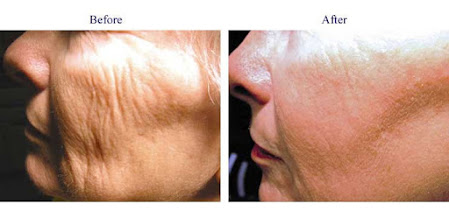Navigating the Challenges of a Cut Facial Nerve
The facial nerve plays a crucial role in our ability to express emotions, speak, and carry out daily activities. However, a cut facial nerve can have a profound impact, leading to facial paralysis and a range of physical and emotional challenges. In this blog post, we will explore the causes, symptoms, and treatment options for a cut facial nerve, as well as provide insights on how to cope with facial paralysis and regain quality of life.
1. Understanding the Facial Nerve: The facial nerve, also known as cranial nerve VII, controls the muscles of facial expression. It transmits signals from the brain to the muscles, enabling various facial movements and expressions. A cut facial nerve can occur due to trauma, surgery, or other medical conditions, disrupting this essential communication pathway and resulting in facial paralysis.
2. Symptoms of Facial Paralysis: Facial paralysis caused by a cut facial nerve can manifest in various ways. Common symptoms include the inability to move the affected side of the face, drooping of the mouth or eyelid, difficulty closing the eye, loss of taste sensation, and dryness or excessive tearing in the eye. These symptoms can significantly impact one's physical appearance, self-esteem, and overall quality of life.
3. Treatment Options: The treatment for a cut facial nerve depends on the severity and cause of the injury. In some cases, surgical repair may be necessary to reconnect the nerve ends and restore facial function. Physical therapy, including exercises and massage techniques, can also aid in improving muscle strength and mobility. Additionally, certain medications, such as steroids, may be prescribed to reduce inflammation and promote nerve healing.
4. Coping with Facial Paralysis: Coping with facial paralysis can be challenging both physically and emotionally. It is important to seek support from healthcare professionals, such as facial rehabilitation specialists, who can provide guidance on managing symptoms and improving facial function. Additionally, joining support groups or seeking therapy can help individuals cope with the psychological impact of facial paralysis and maintain a positive mindset throughout the recovery process.
5. Rehabilitation and Facial Exercises: Facial exercises and rehabilitation techniques can play a crucial role in regaining muscle strength and control. These exercises are designed to stimulate the facial muscles, improve blood circulation, and encourage nerve regeneration. Working closely with a facial rehabilitation specialist can ensure a personalized approach to rehabilitation, maximizing the potential for recovery.
Conclusion: A cut facial nerve and subsequent facial paralysis present unique challenges that can significantly impact one's life. Understanding the causes, symptoms, and treatment options for facial paralysis is crucial in navigating this journey. By seeking appropriate medical care, adopting rehabilitation techniques, and embracing a support system, individuals can cope with facial paralysis and work towards regaining their physical and emotional well-being. Remember, with time, patience, and professional guidance, it is possible to regain control and lead a fulfilling life despite the challenges posed by a cut facial nerve.




Comments
Post a Comment